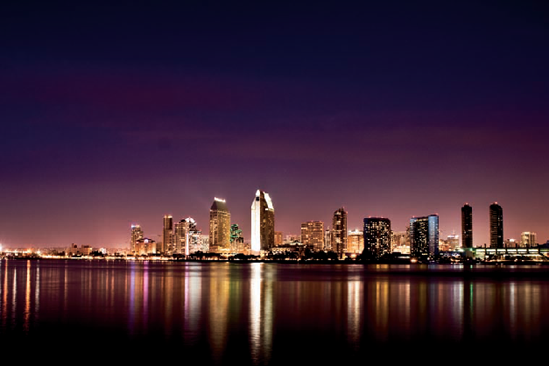Chapter 9. Night and Low-Light Photography
If photography is all about capturing the light, what happens when very little light is available? Digital photography at night is not only possible, it can be lots of fun. You may encounter some difficulties photographing in the dark, but the ability to get instant feedback using the camera's built-in LCD screen make it much easier than ever before. Just before the sun goes down (or comes up) is one of the best times to photograph. After the sun goes down there is still a great deal of light remaining, especially in cities. Buildings are lit up at night, streetlights cast their glow, and glowing neon signs are all great light sources for night and low-light photography. Other great subjects to photograph at night are light trails and fireworks, both which are covered in this chapter.

The San Diego city skyline was photographed from Coronado Island. The sun had set more than 30 minutes earlier, but I had enough light from the city to light the scene. Taken at 20 seconds, f/9, ISO 100.
Exposure Considerations
Photographing at night and in low light is a huge exposure problem. If you are shooting at night, you must learn how to estimate proper exposures because the built-in light meter won't be as reliable.
One way to help get the best exposure at night is to start photographing before the sun goes all the way down. While the sun is still present, ...